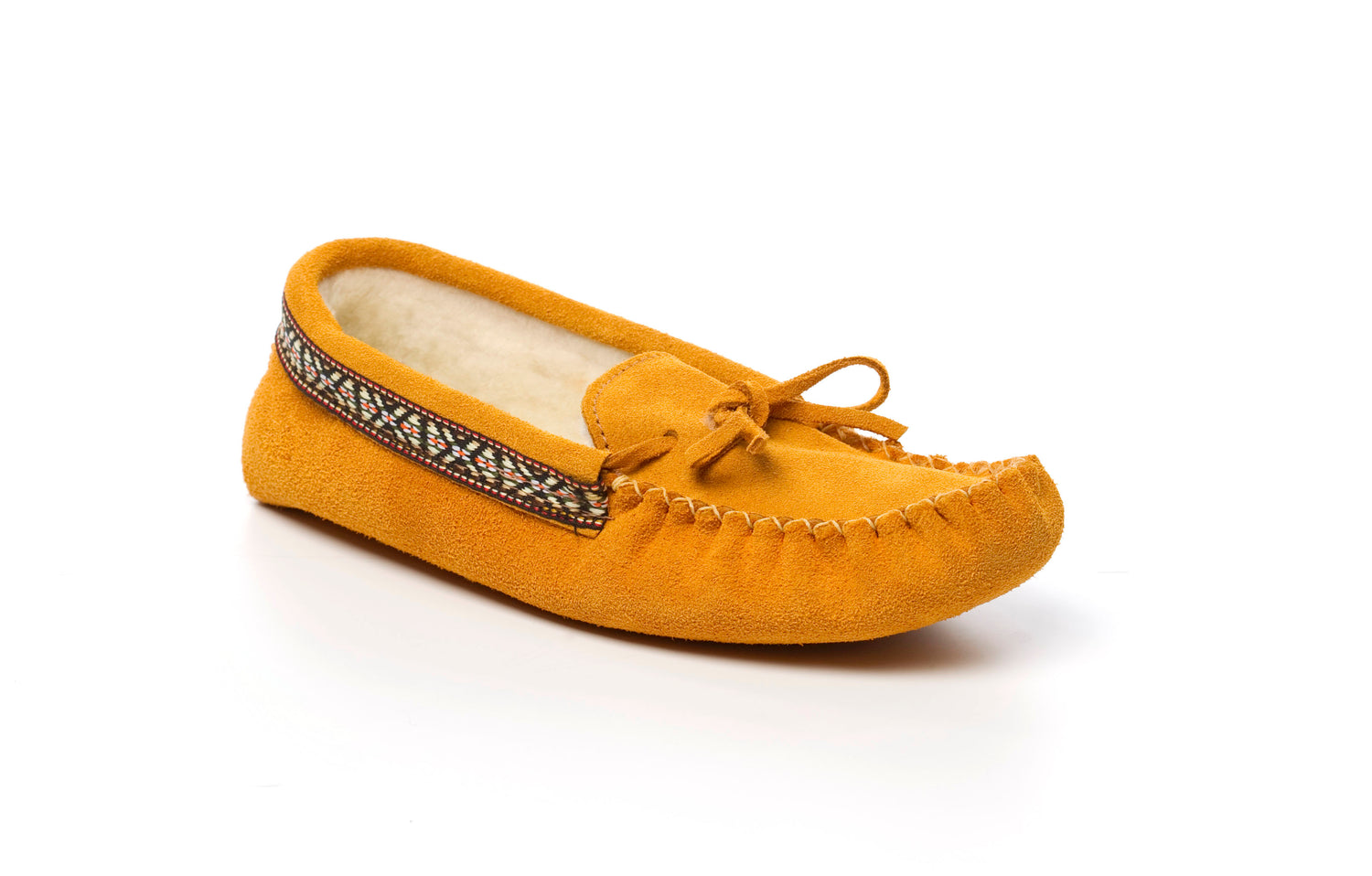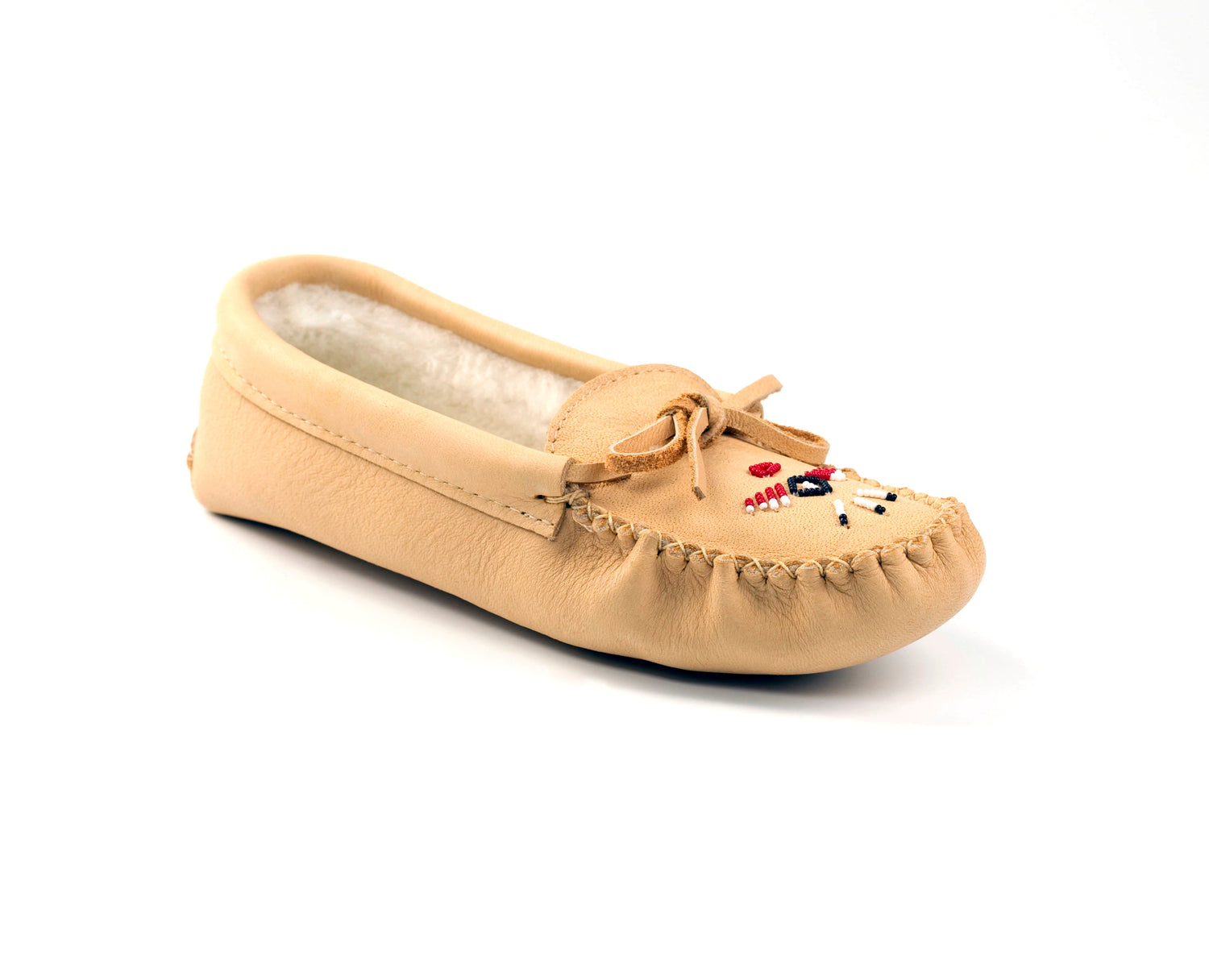
Beyond the Myth: Unpacking the Truth and Cultural Heart of Moccasins and Mukluks
Share
Beyond the Myth: Unpacking the Truth and Cultural Heart of Moccasins and Mukluks
culture, and ingenious design. Yet, like many culturally significant items, they often become shrouded in myths and misunderstandings. Today, we're setting the record straight, not just for accuracy, but to honour the deep cultural roots of these incredible creations.
Myth 1: Moccasins and Mukluks are "Just Slippers" or "Trendy Boots."
The Myth: Many people mistakenly categorize moccasins as flimsy house slippers or see mukluks as just another seasonal fashion boot, especially with fast-fashion imitations flooding the market. This view often strips them of their inherent value and historical significance.
The Truth & Why It Matters: Moccasins and mukluks are ancient, sophisticated forms of footwear, meticulously designed for specific environments and activities by Indigenous peoples across North America.
-
Moccasins: The word "moccasin" comes from an Algonquian word, and the designs vary vastly across nations, each tailored for different terrains (forest, prairie, desert) and purposes (hunting, ceremonial, daily wear). They are durable, often hand-stitched, and made from robust hides, providing silent movement and excellent ground feel.
-
Mukluks: Originating from Arctic Indigenous cultures (Inuit, Yup'ik, Inupiaq), mukluks (or kamik) are expertly crafted for extreme cold. They are tall, insulated boots, often made from sealskin, caribou, or moose hide, with soft soles for silent travel over snow and ice. Their design prevents frostbite and allows for breathability, preventing moisture buildup in sub-zero temperatures.
To dismiss them as "just slippers" or "trendy boots" is to erase thousands of years of Indigenous innovation, adaptation, and artistry. It overlooks their sophisticated engineering, which allowed peoples to thrive in diverse and often harsh climates. Recognizing their true purpose elevates respect for Indigenous knowledge.
Myth 2: All Moccasins/Mukluks are the Same, or "Native-Inspired" is Good Enough.
The Myth: A quick search might show countless "moccasin-style" shoes made from synthetic materials, often marketed as "Native-inspired." The assumption can be that all versions are interchangeable, or that appropriating the style without cultural understanding is acceptable.
The Truth & Why It Matters: The authenticity of materials, craftsmanship, and design matters deeply. There's a profound difference between genuine Indigenous-made or authentically Canadian-made moccasins/mukluks using traditional techniques and materials, and mass-produced imitations.
-
Materials: Authentic items use natural hides (moose, deer, caribou, sheepskin) and often natural furs, chosen for their breathability, warmth, and durability. These natural properties cannot be replicated by synthetic alternatives, which often cause feet to sweat and provide less comfort and longevity.
-
Craftsmanship: Many traditional moccasins and mukluks feature intricate hand-beading, quillwork, or fur details that are not just decorative but carry cultural meanings and symbols passed down through generations. These are skills perfected over centuries.
-
Cultural Context: When you purchase an authentic pair, especially from an Indigenous artisan or a company committed to ethical sourcing and respectful representation, you are supporting living cultures, traditional economies, and the continuation of ancestral art forms. To buy cheap imitations often perpetuates a cycle of cultural appropriation, where Indigenous designs are taken without giving back to the communities from which they originated.
It's vital to seek out and support products that respect their origins, ensuring the traditions and stories embedded in each stitch and bead continue to thrive.
Myth 3: Moccasins and Mukluks Are Only for "Traditional" Wear.
The Myth: Some might think these types of footwear are only for historical reenactment, ceremonial use, or rural living, not for modern, urban life.
The Truth & Why It Matters: Moccasins and mukluks have seamlessly integrated into contemporary life due to their timeless comfort, practical benefits, and classic style.
-
Modern Adaptations: While respecting traditional forms, many manufacturers adapt these designs for everyday modern wear. This includes adding durable rubber or crepe soles for outdoor use, ensuring they are perfectly suited for running errands, cozying up at home, or casual outings.
-
Health & Wellness: As we discussed in our previous post, the natural materials offer incredible benefits for foot health, from temperature regulation to cushioning. This makes them ideal for anyone seeking comfort and wellness in their daily lives.
-
Enduring Style: Their simple, elegant lines and natural textures make them incredibly versatile. They complement modern casual wear, aligning perfectly with trends that prioritize comfort, natural materials, and authentic craftsmanship.
Dispelling this myth helps to show that cultural heritage is dynamic and resilient, capable of adapting and thriving in contemporary contexts without losing its essence. It highlights the universality of good design rooted in practical needs.
By understanding and challenging these myths, we not only gain a deeper appreciation for the beauty and comfort of moccasins and mukluks but also foster greater respect for the rich Indigenous cultures that originated them. When you choose an authentic, quality pair, you're not just buying shoes; you're investing in a story, a tradition, and a legacy of ingenuity.



